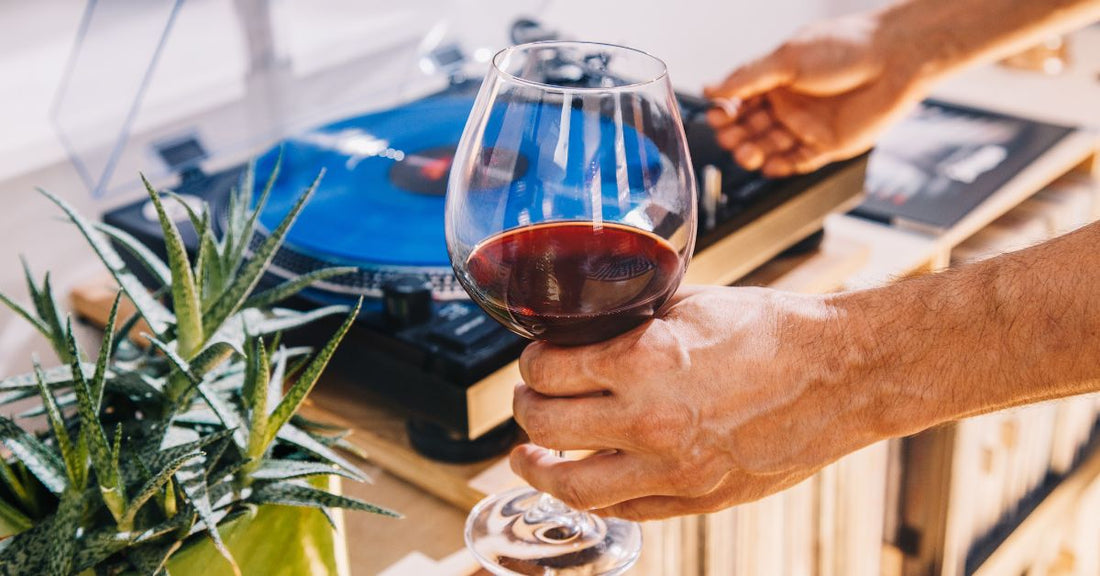Understanding the nuances of wine alcohol content is an important part of appreciating the beverage’s complexity and making informed choices about consumption. Whether you’re a seasoned sommelier or a curious novice, knowing alcohol levels can enhance your wine experience and help you choose the perfect bottle for every occasion.
In this expert guide from the Wine Market, we explore wine alcohol content by type. This knowledge will help you enjoy wine responsibly while savoring its rich flavors.
What Is the Wine Alcohol Content?
Wine alcohol content, which you will typically find listed as a percentage on the bottle, refers to the amount of alcohol by volume (ABV) present in a bottle. This percentage indicates alcoholic strength and can affect the wine’s taste, body, and overall experience.
Generally, wines have an ABV ranging from 5 to 25 percent. Understanding these figures is crucial for pairing wines with meals, exploring tastes, anticipating the effects of consumption, and selecting a wine that aligns with your preferences.
What Affects the Wine Alcohol Content?
Several factors influence wine alcohol content, beginning with the type of grape. Warmer climates often produce grapes with a higher sugar content, which leads to higher alcohol levels when fermentation is complete.
Winemaking techniques also influence alcohol content. For example, extended fermentation processes can yield wines with increased alcohol content.
Lastly, the region and style of wine affect ABV. Old World wines, known for tradition, typically have lower alcohol levels than New World wines. The latter often have higher ABV levels from more liberal winemaking practices.
Wines With Low Alcohol Content
Wines with low alcohol content offer a lighter, more delicate taste, perfect for casual sipping or pairing with lighter dishes. These wines usually have an ABV of 10 percent or less.
Moscato d’Asti
One popular choice is Moscato d’asti, an Italian sparkling wine known for its sweet, fruity flavors and low alcohol level of around 5–6 percent. It’s a delightful accompaniment to desserts or spicy dishes, balancing sweetness with a crisp finish. Many people drink Moscato d’asti on holidays and to celebrate gatherings.
German Riesling
German Riesling is another excellent option for those seeking lower-alcohol wines. With ABV levels often ranging from 8% to 9%, Rieslings sport a balance of sweetness and acidity. These wines are perfect for pairing with poultry, spicy Asian cuisine, or simply enjoying on a sunny afternoon.
Brachetto d’Acqui
Sparkling red and rosé wines, such as brachetto d’acqui, also offer approachable alcohol content levels from 7 to 9 percent. These wines bring a refreshing burst of fruitiness and effervescence, making them ideal for celebratory toasts or summer gatherings.

Wines With Moderate Alcohol Content
Wines with moderate alcohol content strike a balance, offering fuller flavors without overwhelming potency. With ABV levels ranging from 10 to 13 percent, these wines have great versatility and food-pairing potential.
Italian Chianti
Italian Chianti is a classic example. With an ABV of around 12 percent, this wine is known for its earthy flavors and bright acidity. It is an ideal companion for pasta dishes and roasted meats.
Pinot Grigio
Pinot grigio, with its crisp and refreshing profile, is a popular choice among white wine enthusiasts. With a typical ABV of between 11 and 13 percent, this wine is both light and invigorating. Renowned for its vibrant citrus notes, pinot grigio often hints at flavors of lemon, lime, and green apple, providing a zesty complement to its acidity. This makes it an excellent pairing with seafood dishes such as grilled shrimp or scallops, as well as light salads featuring fresh greens and vinaigrette.
French Champagne
French Champagne is synonymous with celebration and luxury. With ABV levels usually around 12 percent, Champagne’s effervescence and complex flavors make it versatile for pairing with various dishes or enjoying it on its own for special occasions.
Wines With High Alcohol Content
Wines with high alcohol content typically range from 13 to 15 percent ABV, delivering bold flavors and a fuller mouthfeel.
Sauvignon Blanc
Sauvignon blanc, which comes from regions like California and New Zealand, often features an ABV of 13 to 14 percent. With its vibrant acidity and aromatic notes, sauvignon blanc pairs well with green salads, goat cheese, and seafood.
Chardonnay
Chardonnay, one of the most popular white wines worldwide, often has ABV levels between 13 and 14.5 percent. Its rich, buttery flavor profile, which also features hints of vanilla and oak from barrel aging, is perfect for pairing with creamy pasta dishes or roasted chicken. These flavors enhance the luxurious dining experience by balancing the richness of the food with the wine’s own depth. Whether you enjoy chardonnay with a casual dinner or a sophisticated gathering, it is a classic and satisfying choice for many wine enthusiasts.
California Pinot Noir
California pinot noir, with ABV levels around 13 to 14.5 percent, is a complex and versatile wine. This red wine’s fruit-forward character and smooth tannins make it a favorite for pairing with grilled salmon, duck, or earthy mushroom dishes.
Wines With Very High Alcohol Content
Wines with very high alcohol content are robust and intense, often with ABV levels exceeding 15 percent. Even the most experienced sommeliers should enjoy these wines in moderation.
California Zinfandel
California zinfandel is a prime example, often boasting an ABV of 15 percent or more. With its bold flavors of berries, spice, and oak, zinfandel is a powerful wine that pairs well with barbecue or rich, hearty stews.
Fortified Wines
Fortified wines, such as port and sherry, feature intentionally elevated alcohol contents, typically from 18 to 23 percent ABV. Enjoy these wines as digestifs or dessert pairings to offer rich, complex flavors and a warming finish.

Tips for Selecting Wines Based on Alcohol Content
When selecting wines, consider the occasion and your preferences. For casual sipping or light meals, try wines with lower alcohol content. For more robust flavors and complex pairings, explore wines with moderate to high ABV levels.
Pairing wine with food is an art. Lighter wines complement delicate dishes, while bold wines stand up to richer flavors. Understanding alcohol content helps you create harmonious pairings, enhancing both the wine and the meal.
In the end, experimenting with different wine styles can be an enjoyable way to discover your preferences. Don’t hesitate to ask for recommendations from a trusted sommelier or at your favorite wine shop, like the Wine Market, to guide you in your selections.
Where To Find Wine Varieties
The market for wine is large and diverse, offering countless options to explore. Online wine retailers offer convenience and variety, with detailed descriptions and customer reviews to guide your choices. These retailers often feature curated selections and exclusive offers, making it easy to explore new wines from the comfort of your home.
If you’re looking for maximum convenience when purchasing wines, browse the Wine Market today. We offer everything from light-bodied red wines to high-ABV California zinfandels. Browse our website today to explore our wide range of wines.
Exploring Wine Through Alcohol Content
Understanding wine alcohol content by type enriches the wine experience, allowing you to make informed choices that suit your taste and occasion. By considering the factors in this expert guide, you can enhance your enjoyment and appreciation of this timeless beverage.
Check out the Wine Market today to find the perfect wine strength to meet your preferences and to suit your next gathering. Cheers to discovering the perfect wine for every moment!

